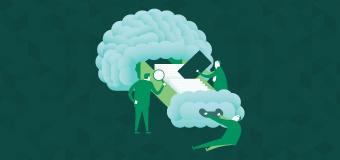Trait theory is the personality development model most directly based on research data, according to Personality Theories: Critical Perspectives.
Social Cognitive Theory
Developed by Albert Bandura, social cognitive theory stresses that personalities are formed based on social contexts. It assumes two key principles, according to Williams and Cervone:
- The inner psychology of individuals, their environment, and their behavior all influence each other.
- People are best understood in terms of three types of cognitive abilities: those that help them represent events symbolically in their minds, self-reflect, and self-develop.
According to social cognitive theory, personality formation occurs when people observe the behaviors of others. This leads to adaptation and assimilation, particularly if those behaviors are rewarded. Social cognitive theory is often considered a bridge between personality theories that emphasize behavior and those that emphasize cognition.
Kim provides insight into the real-world applications of the four theories within the field of psychology:
- Psychoanalytic theory encourages clinicians to take a “past-focused” and “under-the-surface” approach to treatment. Counselors may often look at early life events of their clients in order to provide better care.
- Humanistic theory encourages counselors to approach client problems from a present-focused view.
- Trait theory is useful in the scientific study of personality (as opposed to therapeutic services). It allows researchers to see the connection between characteristics, thoughts, feelings, and behaviors.
- Social cognitive theory helps researchers inform their knowledge of social psychology. This allows them to study ways in which situations can cause people to display personality inconsistencies.
Assessing Personality
When assessing personality, clinicians often turn to two main types of evaluations: objective and projective tests.
Objective tests measure aspects of an individual’s personality in relation to academically recognized norms. The most common example is the Minnesota Multiphasic Personality Inventory, or MMPI-2. (The test was originally published in 1940 and then revised in 1989.) On the MMPI-2, individuals must answer 567 true/false questions in a 60- to 90-minute session. Questions on the MMPI-2 identify potential personality features such as anger or addiction. The test is comprehensive and designed to ward against false positives and lying. MMPI-2 evaluations are often used in settings such as mental health and medical fields. They are also common when evaluating candidates for “high-risk” occupations such as airline pilots and nuclear power plant workers, according to Occupational Medicine.
Projective tests are subjective evaluations that ask clients to respond to ambiguous stimuli, such as words or visual images. An individual’s reply is meant to help reveal his or her internal struggles and emotions. The Rorschach Inkblot Test is a classic example of a projective test. After looking at 10 inkblots of varying shapes and colors, clients are asked to describe what they see. Answers are interpreted based on factors like subject matter, the kind of shapes or colors emphasized, and the location of the seen image. While the Rorschach test is useful, Kim views it as one of many tools and notes that it is not adequate for understanding the nuances of personality on its own.

